The Importance of Proper Tyre Disposal and Recycling
The world we live in is constantly evolving, and with it comes the responsibility of managing our waste effectively. One of the most pressing issues we face today is the disposal of tyres. Did you know that millions of tyres are discarded every year? This staggering number underscores the critical need for responsible tyre disposal and recycling. When tyres are improperly disposed of, they can wreak havoc on our environment, leading to serious consequences such as soil and water pollution. It's not just about getting rid of old tyres; it’s about understanding the ripple effects of our actions. By embracing effective recycling practices, we can mitigate these risks and protect our planet for future generations.
Tyres are made from a complex mix of materials that are not biodegradable. When they end up in landfills, they can take up valuable space and release toxic substances into the soil and waterways. This is why the importance of proper tyre disposal cannot be overstated. By recycling tyres, we can transform waste into valuable resources, promoting a circular economy that benefits both the environment and the economy. Think of recycling as a second chance for tyres—a way to give them new life instead of letting them languish in a landfill.
Moreover, tyre recycling is not just an environmental necessity; it’s also a smart economic move. The process of recycling tyres can lead to the creation of new products, which in turn generates jobs and stimulates local economies. As we delve deeper into the various methods of tyre recycling and the regulations that govern them, it becomes evident that responsible tyre disposal is a multifaceted issue that requires our attention and action.
In the sections that follow, we will explore the environmental impacts of tyre waste, the innovative methods of tyre recycling, the regulations that guide our actions, and the myriad benefits that come from embracing a sustainable approach to tyre disposal. So, buckle up as we embark on this journey toward a cleaner, greener future!
Improper disposal of tyres can lead to harmful environmental consequences, including soil and water pollution. Understanding these impacts emphasizes the necessity for effective recycling practices to mitigate these risks.
Various recycling methods exist for tyres, including shredding, crumb rubber production, and pyrolysis. Each technique offers unique benefits and applications, contributing to a circular economy and resource conservation.
Shredding tyres into smaller pieces facilitates various uses, from road construction to playground surfaces. This method is efficient and helps repurpose waste into valuable materials.
Shredded tyres can be used in multiple applications, such as asphalt modification, erosion control, and as fuel in cement kilns, showcasing their versatility in sustainable practices.
While effective, shredding tyres poses challenges, including contamination and equipment wear. Addressing these issues is vital for maintaining efficiency and effectiveness in the recycling process.
Pyrolysis is a thermal decomposition method that converts tyres into oil, gas, and carbon black. This process not only recovers valuable resources but also reduces landfill waste significantly.
Understanding the regulations surrounding tyre disposal is crucial for compliance and environmental protection. These laws aim to ensure safe handling and promote recycling initiatives.
Various countries have implemented regulations to manage tyre waste effectively. Familiarizing oneself with these laws is essential for businesses and individuals involved in tyre disposal.
Local regulations may vary significantly, requiring businesses to adhere to specific guidelines for tyre disposal. Staying informed about these requirements helps avoid penalties and promotes responsible practices.
Recycling tyres offers numerous benefits, including resource conservation, reduced landfill use, and the creation of new products. Understanding these advantages encourages more sustainable waste management practices.
Tyre recycling can lead to economic benefits, such as job creation in the recycling industry and lower costs for raw materials. This economic incentive supports the growth of sustainable practices.
Proper tyre disposal and recycling can positively impact communities by reducing pollution and enhancing public health. Engaging communities in recycling efforts fosters a collective responsibility toward environmental stewardship.
- What happens to tyres when they are not recycled? Tyres that are not recycled can end up in landfills, where they can take hundreds of years to decompose and may release harmful chemicals into the environment.
- How can I recycle my old tyres? Many local waste management facilities and tyre retailers offer recycling programs. Check with your local services to find out the best options available in your area.
- What are the benefits of recycling tyres? Recycling tyres conserves resources, reduces landfill use, creates new products, and can even generate economic benefits through job creation.

Environmental Impact of Tyre Waste
The improper disposal of tyres poses a significant threat to our environment, leading to a cascade of negative consequences that can affect not just local ecosystems but also global health. When tyres are dumped in landfills or abandoned in nature, they do not decompose like organic materials. Instead, they can persist for decades, leaching harmful chemicals into the soil and water systems. This contamination can lead to serious health risks for both humans and wildlife.
Tyres are made from a complex mixture of materials, including rubber, metal, and various chemicals. When they are improperly disposed of, these materials can break down and release toxic substances. Some of the most concerning environmental impacts include:
- Soil Contamination: Chemicals from tyres can seep into the ground, contaminating soil and affecting plant growth.
- Water Pollution: Rainwater can wash toxins from discarded tyres into nearby rivers and lakes, threatening aquatic life and drinking water sources.
- Air Quality Issues: Burning tyres, often done to dispose of them illegally, releases harmful pollutants into the air, contributing to respiratory problems and other health issues.
Moreover, the accumulation of tyres in landfills can create breeding grounds for pests, such as mosquitoes, which can lead to the spread of diseases like West Nile virus and Zika virus. The visual pollution caused by discarded tyres also detracts from the natural beauty of landscapes, impacting tourism and local economies.
Understanding the environmental impact of tyre waste is crucial in motivating individuals and businesses to adopt responsible disposal and recycling practices. By recognizing the potential dangers associated with tyre waste, we can collectively work towards solutions that not only protect our environment but also promote a sustainable future. This awareness is the first step in driving change, encouraging communities to engage in recycling programs and support legislation aimed at reducing tyre waste. After all, a cleaner planet starts with informed choices and responsible actions.

Methods of Tyre Recycling
When it comes to tyre recycling, there are several innovative methods that not only help in reducing waste but also repurpose materials in a way that benefits various industries. Each method has its own unique advantages, contributing to a more sustainable and circular economy. Let's dive into some of the most prominent techniques used in tyre recycling today.
One of the most common methods is shredding. This process involves breaking down tyres into smaller pieces, which can then be utilized in a variety of applications. Shredded tyres are not just waste; they can be transformed into valuable resources. For instance, the shredded material can be used in road construction, providing a durable and flexible base layer. Additionally, it can be employed in playground surfaces, creating safe and cushioned environments for children to play.
Shredding tyres into granules is a highly efficient method that opens up numerous possibilities. The granulation process allows for the production of crumb rubber, which is used in various applications, such as asphalt modification and erosion control. The versatility of shredded tyres showcases their potential in sustainable practices, turning what was once considered waste into functional materials.
Shredded tyres can be utilized in a multitude of ways, including:
- Asphalt Modification: Adding crumb rubber to asphalt can enhance its durability and longevity.
- Erosion Control: Shredded tyres can be used to stabilize slopes and prevent soil erosion.
- Fuel in Cement Kilns: The high calorific value of shredded tyres makes them an excellent alternative fuel source.
While shredding tyres is effective, it does come with its own set of challenges. One major issue is contamination, as tyres may contain foreign materials such as metals or textiles that can hinder the recycling process. Additionally, the wear and tear on shredding equipment can lead to increased maintenance costs and downtime. Addressing these challenges is crucial for maintaining efficiency and ensuring that the recycling process remains effective.
Another fascinating method of tyre recycling is pyrolysis. This thermal decomposition process involves heating tyres in the absence of oxygen, breaking them down into valuable products such as oil, gas, and carbon black. The beauty of pyrolysis lies in its ability to recover resources that can be used in various industries, while simultaneously reducing the amount of waste sent to landfills. The oil produced can be refined into fuels, while the carbon black can be repurposed in the production of new tyres or other rubber products.
In summary, the methods of tyre recycling, including shredding and pyrolysis, not only help in managing waste but also contribute to the creation of new products and resources. By understanding and implementing these techniques, we can take significant steps toward a more sustainable future.
Q: What happens to tyres if they are not recycled?
A: If tyres are not recycled, they often end up in landfills, where they can take hundreds of years to decompose. This can lead to environmental issues such as soil and water pollution.
Q: Can I recycle my old tyres at home?
A: While you can't recycle tyres at home, many local recycling centers and automotive shops offer tyre recycling services. It's best to check with your local waste management authority for options available in your area.
Q: What are the economic benefits of tyre recycling?
A: Tyre recycling can create jobs in the recycling industry, lower costs for raw materials, and promote sustainable practices, making it economically beneficial for communities and businesses alike.
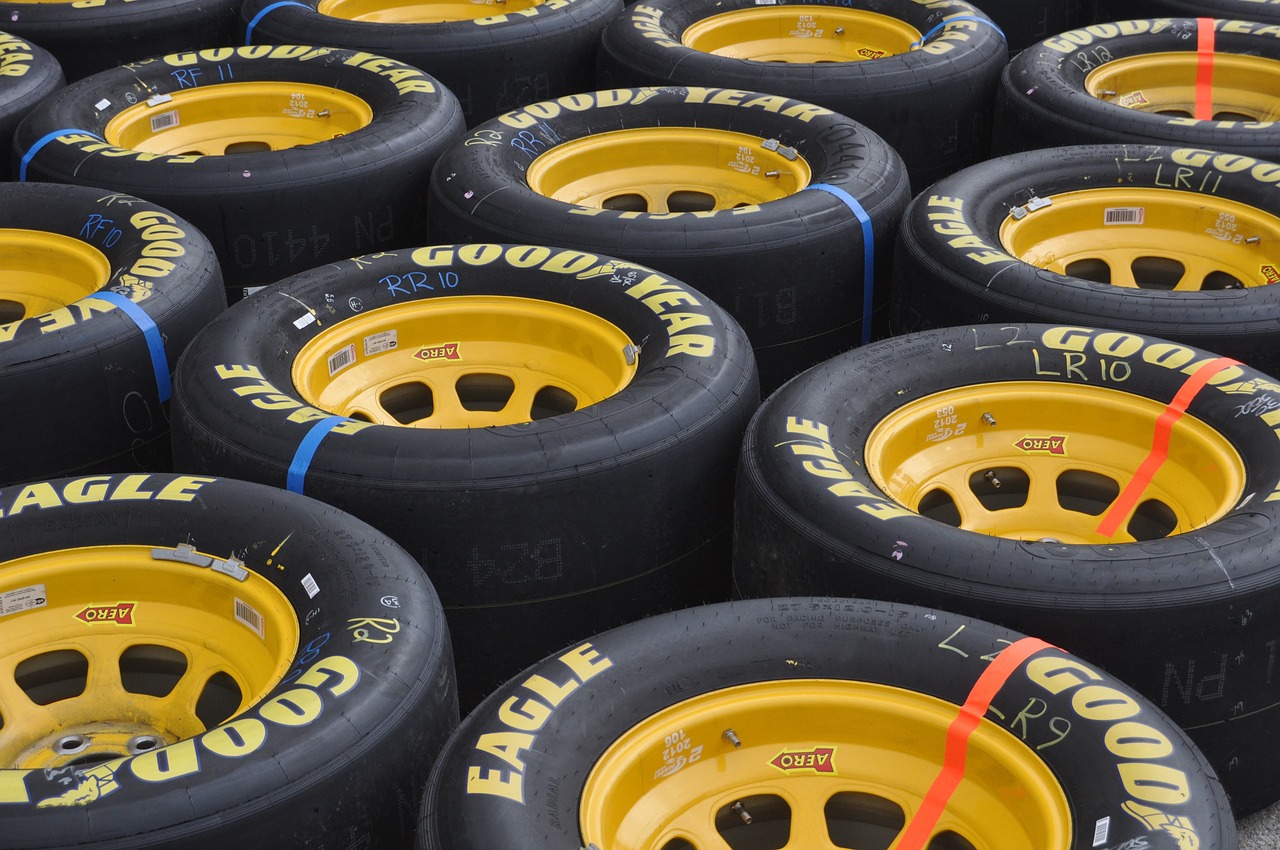
Shredding and Granulation
Shredding and granulation are pivotal processes in the recycling of tyres, transforming these once-discarded materials into valuable resources. When tyres are shredded into smaller pieces, they can be repurposed for a myriad of applications, demonstrating the incredible potential of what might otherwise be considered waste. Imagine taking a bulky, worn-out tyre and breaking it down into tiny pieces that can be used to create durable surfaces for playgrounds or enhance the quality of road construction materials. This transformation not only helps in managing tyre waste but also contributes significantly to sustainability efforts.
The shredding process typically involves heavy machinery that cuts the tyres into manageable fragments. These fragments can then undergo further processing, known as granulation, where they are reduced to even finer particles. The result is a versatile material known as crumb rubber, which can be utilized in various innovative ways. For instance, crumb rubber is often mixed with asphalt to create a more resilient road surface, which can withstand the rigors of weather and heavy traffic. Additionally, it can be used in sports fields and playgrounds, providing a safe and cushioned surface for children and athletes alike.
However, while shredding and granulation are effective methods for recycling tyres, they are not without their challenges. One significant issue is the presence of contaminants, such as steel belts and fabric, which can complicate the recycling process. If these contaminants are not adequately removed, they can lead to equipment wear and tear, reducing the efficiency of the operation. Therefore, it is crucial for recycling facilities to implement stringent quality control measures to ensure that the shredded material is as clean and usable as possible.
Moreover, the economic aspect of shredding and granulation cannot be overlooked. The demand for recycled rubber products is steadily increasing, which provides a lucrative opportunity for businesses engaged in tyre recycling. By investing in advanced shredding technologies and maintaining high standards of operation, these businesses can not only improve their profitability but also contribute to a more sustainable future.
In summary, shredding and granulation are essential processes in the tyre recycling industry, turning waste into valuable materials. By overcoming challenges such as contamination and focusing on efficiency, we can harness the full potential of shredded tyres. This not only promotes environmental sustainability but also opens up a world of economic opportunities for businesses and communities alike.
- What are the main benefits of tyre shredding? Tyre shredding helps reduce waste, creates reusable materials, and supports environmental sustainability.
- Can all types of tyres be recycled? Most tyres can be recycled, but some may require special handling due to contaminants.
- How does shredded tyre material benefit road construction? Shredded tyre material can enhance the durability and flexibility of asphalt, leading to longer-lasting roads.
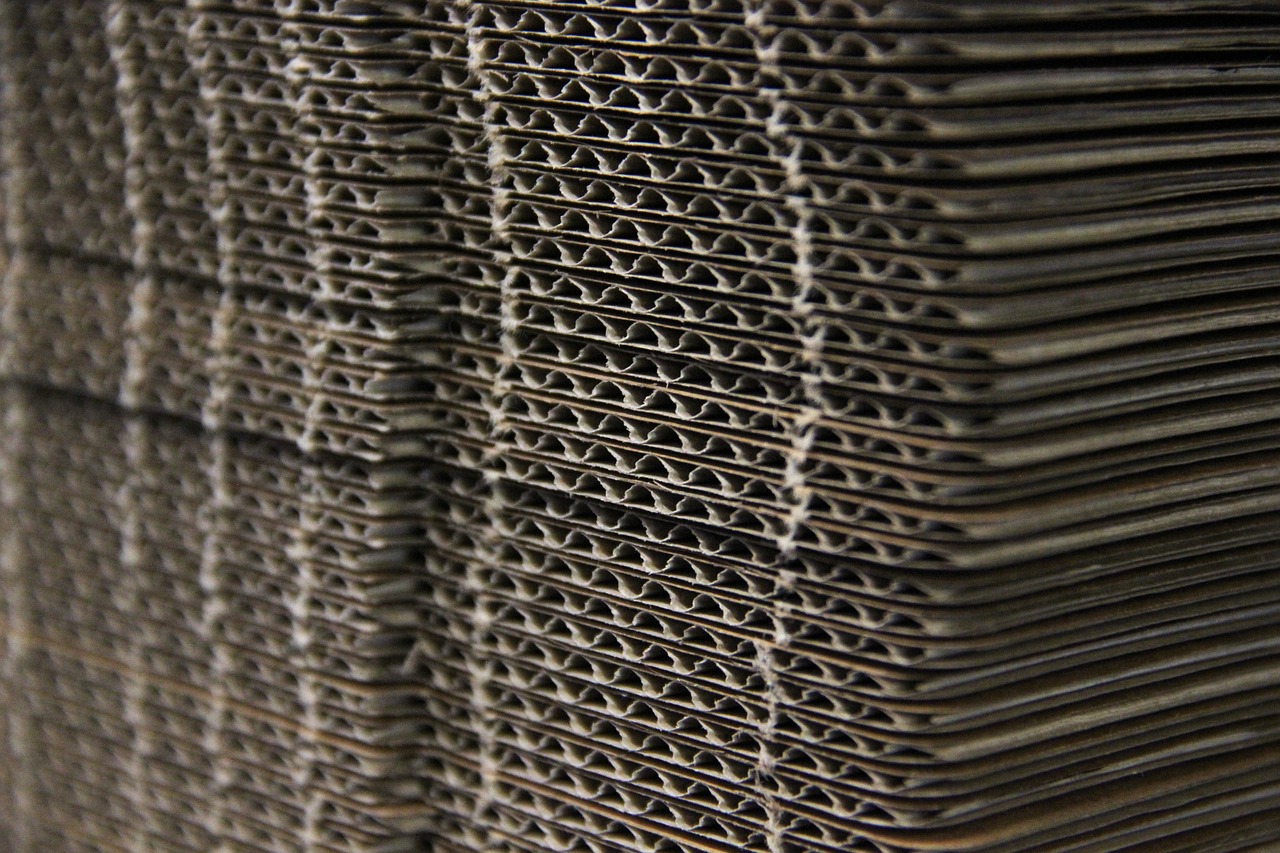
Applications of Shredded Tyres
Shredded tyres, often seen as mere waste, actually hold a treasure trove of applications that can significantly contribute to various industries. The versatility of shredded tyres is nothing short of remarkable, making them a valuable resource in several sectors. For instance, one of the most common applications is in asphalt modification. When shredded tyre rubber is mixed with asphalt, it creates a more durable and flexible paving material. This not only enhances the lifespan of roads but also improves their resistance to cracking, especially in extreme weather conditions.
Another fascinating application is in playground surfaces. Shredded tyres can be used to create soft, shock-absorbent surfaces that are safer for children. This innovative use helps to reduce injuries from falls, making playgrounds a safer environment for kids to play. Additionally, the vibrant colors of shredded tyres can add an aesthetic appeal to playgrounds, making them more inviting.
Moreover, shredded tyres play a significant role in erosion control. When used in landscaping and construction, they help stabilize soil and prevent erosion, especially in areas prone to heavy rainfall. The porous nature of shredded tyres allows for water drainage, which helps maintain soil integrity while also minimizing runoff.
In the industrial sector, shredded tyres are increasingly being used as alternative fuel sources. Cement kilns, for example, can utilize shredded tyres as a fuel substitute, reducing reliance on fossil fuels. This not only lowers greenhouse gas emissions but also provides a cost-effective energy solution for manufacturers.
To summarize, the applications of shredded tyres extend far beyond mere waste disposal. They serve crucial roles in enhancing road quality, ensuring safety in recreational areas, controlling erosion, and providing sustainable energy solutions. The potential of shredded tyres exemplifies how innovative recycling practices can lead to a circular economy, where waste is transformed into valuable resources, thus promoting sustainability.
- What are the main benefits of using shredded tyres?
Shredded tyres offer numerous benefits, including improved road durability, enhanced safety in playgrounds, effective erosion control, and a sustainable alternative fuel source.
- How are shredded tyres processed?
The processing of shredded tyres involves shredding them into smaller pieces, which can then be further processed for various applications, such as asphalt modification or playground surfaces.
- Are there any environmental concerns with using shredded tyres?
While using shredded tyres has many benefits, it is crucial to ensure they are processed and used correctly to avoid potential leaching of harmful chemicals. Proper regulations and guidelines help mitigate these risks.
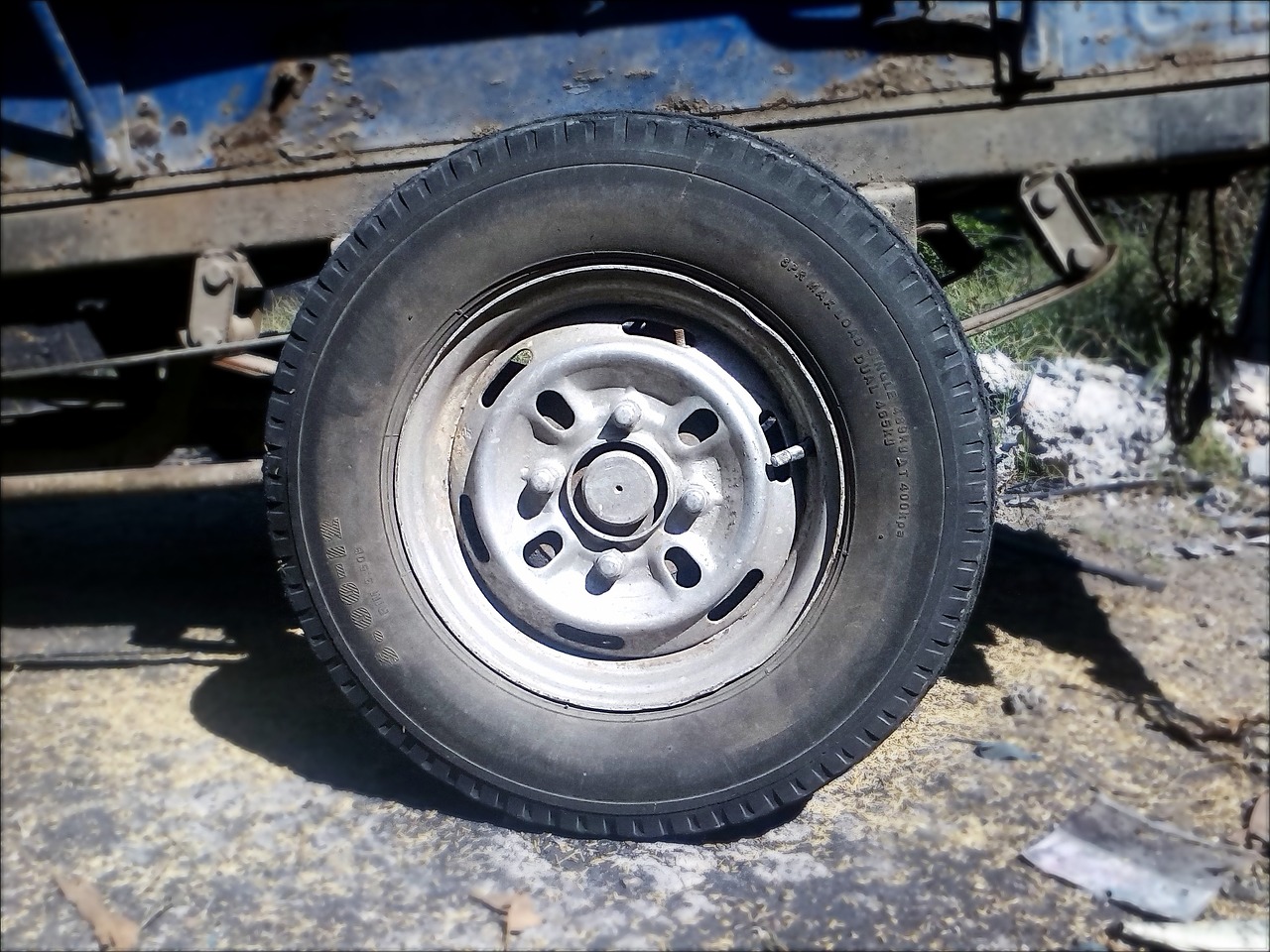
Challenges in Shredding
Shredding tyres, while an effective method for recycling, comes with its own set of challenges that can hinder the efficiency of the process. One of the primary issues is contamination. Tyres often contain various materials, such as metal wires, fabric, and other additives that can complicate the shredding process. This contamination not only affects the quality of the shredded material but can also lead to increased wear and tear on the shredding equipment. Imagine trying to chop vegetables with a knife that has been dulled by dirt; the same principle applies here.
Another significant challenge is equipment wear. The machinery used for shredding tyres is subjected to extreme conditions, which can lead to frequent breakdowns and maintenance issues. This not only increases operational costs but can also lead to delays in processing. To mitigate these challenges, operators must invest in high-quality equipment and implement regular maintenance schedules. It's like owning a car; if you don’t take care of it, you’ll end up with a heap of problems down the road.
Moreover, regulatory compliance poses another hurdle. Different regions have varying regulations regarding the processing and disposal of shredded tyre materials. Adhering to these regulations can be complex and time-consuming, particularly for businesses that operate across multiple jurisdictions. Understanding the legal landscape is crucial for ensuring that operations remain compliant and do not incur penalties. It’s akin to navigating a maze; one wrong turn can lead to significant setbacks.
Lastly, there’s the issue of market demand for shredded tyre products. While there are numerous applications for shredded tyres, such as in asphalt and playground surfaces, the market can be unpredictable. Fluctuations in demand can lead to challenges in finding buyers for the recycled materials, which can ultimately affect the profitability of recycling operations. To counter this, businesses must stay informed about market trends and be prepared to adapt their strategies accordingly.
In summary, while shredding tyres is a vital step in the recycling process, it is not without its challenges. Addressing contamination, equipment wear, regulatory compliance, and market demand are essential for ensuring that tyre recycling operations run smoothly and effectively. By tackling these issues head-on, we can enhance the sustainability of tyre recycling and contribute to a cleaner environment.
- What are the main challenges in tyre shredding?
Contamination, equipment wear, regulatory compliance, and market demand are the primary challenges faced in tyre shredding. - How can contamination be minimized during tyre shredding?
Regular maintenance of shredding equipment and thorough inspection of tyres before processing can help reduce contamination. - What regulations should businesses be aware of?
Businesses should familiarize themselves with local and international regulations regarding tyre disposal and recycling to ensure compliance. - Why is market demand for shredded tyres important?
Market demand affects the profitability of recycling operations; understanding trends helps businesses adapt and thrive.

Pyrolysis Process
The is a fascinating method for recycling tyres, transforming them from waste into valuable resources. This thermal decomposition technique operates under high temperatures in an oxygen-free environment, breaking down the complex structures of tyres into three main products: oil, gas, and carbon black. Imagine taking something that would otherwise pollute our planet and turning it into useful materials—this is the magic of pyrolysis!
When tyres undergo pyrolysis, they are heated to around 400-800 degrees Celsius. During this process, the organic materials within the tyres decompose, resulting in the release of various hydrocarbons. The end products of pyrolysis can be used in multiple ways:
- Oil: This can be refined into fuels or used as a feedstock for producing new chemicals.
- Gas: The gas produced can be utilized to generate energy, powering the pyrolysis process itself or other operations.
- Carbon Black: This valuable material can be used in manufacturing new tyres or as a pigment in various products.
One of the most significant advantages of pyrolysis is its ability to significantly reduce the amount of waste sent to landfills. By converting tyres into useful products, we not only minimize landfill use but also contribute to a more sustainable economy. The pyrolysis process is a prime example of how innovation can lead to environmental benefits, showcasing a circular economy in action.
However, it's important to note that while pyrolysis presents numerous advantages, it also has its challenges. The initial setup costs can be high, and the technology requires careful management to ensure efficiency. Moreover, the quality of the output products can vary based on the feedstock and the specific conditions of the pyrolysis process. Nevertheless, as technology continues to advance, we can expect to see improvements in these areas, making pyrolysis an even more viable option for tyre recycling.
- What is pyrolysis? Pyrolysis is a thermal decomposition process that breaks down organic materials, such as tyres, in the absence of oxygen to produce oil, gas, and carbon black.
- What are the benefits of pyrolysis for tyre recycling? Pyrolysis helps reduce landfill waste, recovers valuable materials, and contributes to a circular economy by turning waste into usable products.
- Is the pyrolysis process environmentally friendly? Yes, when managed properly, pyrolysis can be environmentally friendly by minimizing waste and reducing pollution associated with tyre disposal.

Regulations Governing Tyre Disposal
When it comes to tyre disposal, understanding the regulations that govern this process is crucial for both businesses and individuals. These regulations are designed to ensure safe handling and promote effective recycling initiatives, ultimately protecting our environment. In many countries, tyres are classified as hazardous waste due to the potential for pollution they pose if not disposed of correctly. This classification has led to the establishment of strict guidelines that dictate how tyres should be managed at the end of their lifecycle.
Globally, various countries have implemented regulations to manage tyre waste effectively. For instance, in the European Union, the Waste Framework Directive mandates that all member states must ensure that waste is managed in a way that protects human health and the environment. This includes promoting recycling and recovery of materials from waste, which directly applies to tyres. Familiarizing oneself with these laws is essential for businesses and individuals involved in tyre disposal, as non-compliance can lead to hefty fines and legal repercussions.
On a local level, compliance requirements can vary significantly from one jurisdiction to another. Some regions may have specific guidelines that dictate how tyres must be collected, transported, and processed. For example, in some states in the U.S., there are regulations that require tyre retailers to charge a disposal fee, which is then used to fund recycling programs. Staying informed about these local requirements not only helps avoid penalties but also promotes responsible practices within the community.
Additionally, many countries have established extended producer responsibility (EPR) programs. These programs hold manufacturers accountable for the entire lifecycle of their products, including disposal. Tyre manufacturers may be required to contribute to recycling programs or take back used tyres, ensuring that they are processed responsibly. This shift towards shared responsibility is a key step in creating a more sustainable approach to tyre waste management.
In summary, the regulations governing tyre disposal are essential for protecting our environment and promoting sustainability. By understanding these laws and adhering to them, we can all play a part in reducing the negative impacts of tyre waste. Whether you are a business owner, a tyre retailer, or simply a vehicle owner, being informed about tyre disposal regulations is a crucial aspect of responsible environmental stewardship.
- What are the consequences of improper tyre disposal?
Improper disposal can lead to severe environmental issues, including soil and water pollution, and can also result in legal penalties for individuals and businesses. - How can I find local tyre disposal regulations?
Local regulations can typically be found on your city or county's official website, or by contacting local waste management authorities. - What is extended producer responsibility (EPR)?
EPR is a policy approach that holds manufacturers accountable for the entire lifecycle of their products, including disposal, encouraging them to create more sustainable products.
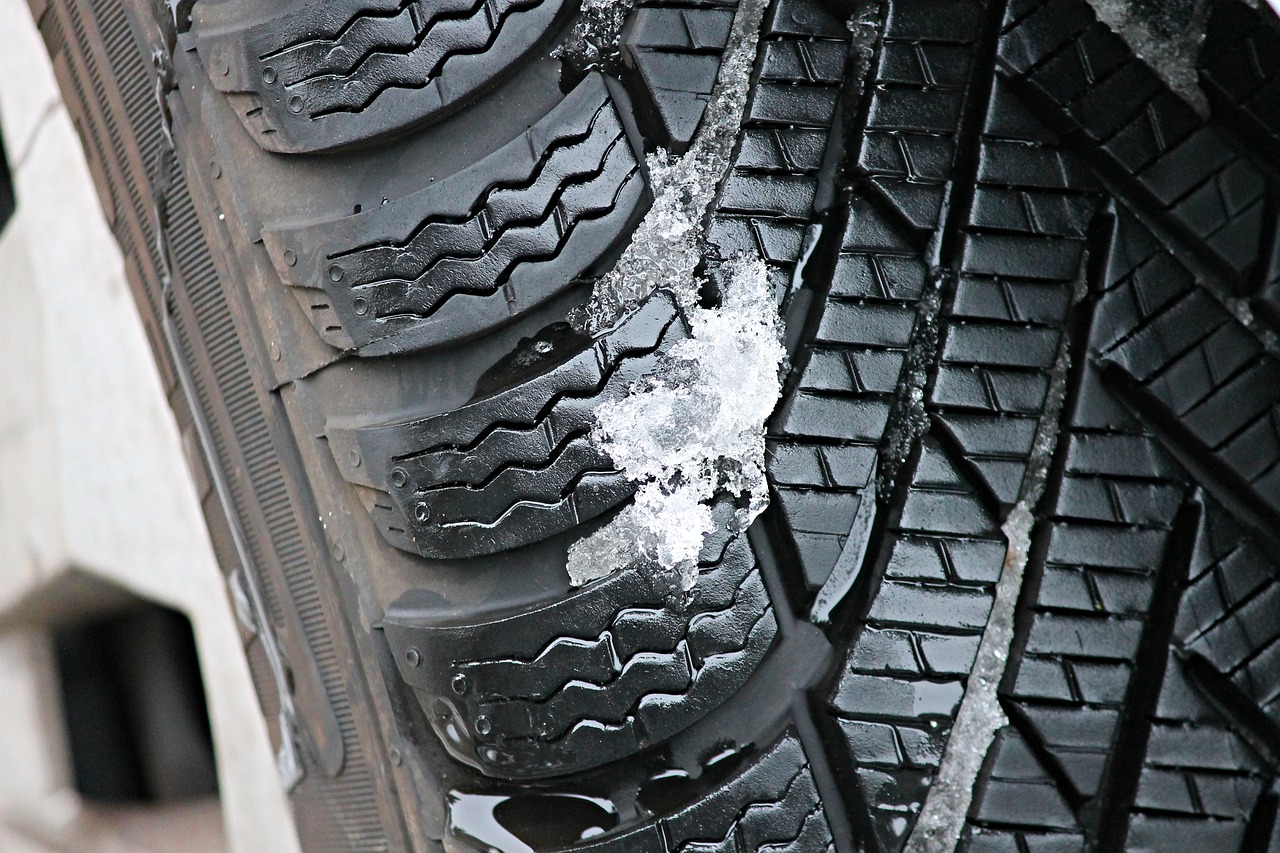
International Regulations
When it comes to the disposal and recycling of tyres, various international regulations have been established to ensure that these processes are handled responsibly. The **importance of these regulations** cannot be overstated, as they play a crucial role in mitigating the environmental impact of tyre waste. Different countries have adopted different frameworks, but the overarching goal remains the same: to promote sustainable practices and minimize harm to the environment.
For instance, in the European Union, the Waste Framework Directive sets the stage for how waste, including tyres, should be managed. This directive emphasizes the need for waste prevention, reuse, recycling, and recovery. It encourages member states to develop systems that facilitate the recycling of end-of-life tyres, ensuring that they do not end up in landfills. Similarly, in Australia, the Product Stewardship Act mandates that manufacturers take responsibility for the entire lifecycle of their products, including their disposal. This legislation has led to the establishment of various tyre recycling programs across the country.
In the United States, regulations can vary significantly from state to state. However, the Resource Conservation and Recovery Act (RCRA) provides a framework for managing solid and hazardous waste, including tyres. Under this act, states are encouraged to implement their own regulations that promote recycling and proper disposal methods. It's essential for businesses and individuals involved in tyre disposal to be aware of these regulations to ensure compliance and avoid hefty fines.
To give you a clearer picture of how different countries approach tyre disposal, here's a brief comparison:
| Country | Regulation | Key Focus |
|---|---|---|
| European Union | Waste Framework Directive | Prevention, reuse, recycling |
| Australia | Product Stewardship Act | Lifecycle responsibility |
| United States | Resource Conservation and Recovery Act | Solid and hazardous waste management |
Understanding these international regulations is vital not only for compliance but also for fostering a culture of environmental responsibility. By adhering to these laws, businesses and individuals can contribute to a more sustainable future and help reduce the detrimental effects of tyre waste on our planet.
- Why is tyre recycling important? Tyre recycling is crucial because it reduces landfill waste, conserves resources, and minimizes environmental pollution.
- What are the main methods of tyre recycling? The primary methods include shredding, crumb rubber production, and pyrolysis, each offering unique benefits.
- Are there regulations for tyre disposal? Yes, various international and local regulations exist to ensure safe and responsible tyre disposal and recycling.
- What are the benefits of adhering to these regulations? Compliance with regulations helps protect the environment, promotes sustainability, and can lead to economic benefits.

Local Compliance Requirements
When it comes to tyre disposal, play a crucial role in ensuring that businesses and individuals adhere to regulations designed to protect the environment. Each region has its own set of rules and guidelines that govern the handling, storage, and disposal of tyres. Ignoring these regulations can lead to severe penalties, including fines and legal repercussions. Therefore, it's essential to stay informed about the specific requirements in your area.
Typically, local compliance includes regulations regarding:
- Storage Limits: Many jurisdictions impose restrictions on how long tyres can be stored at a location before they must be disposed of or recycled. This is to prevent the accumulation of waste that can attract pests and pose fire hazards.
- Permitting: Some areas require businesses that collect or process tyres to obtain specific permits. These permits ensure that companies are operating within the legal framework and are equipped to handle tyres responsibly.
- Transport Regulations: There may be guidelines on how tyres should be transported to recycling facilities, including packaging and labeling requirements to ensure safety and compliance.
Additionally, local authorities often provide resources and support for businesses to help them understand and comply with these regulations. For instance, they may offer workshops, informational brochures, or online resources that outline best practices for tyre disposal and recycling. Engaging with these resources not only helps ensure compliance but can also foster a culture of sustainability within the community.
Failure to comply with local regulations can result in significant consequences. Businesses may face hefty fines, and individuals may be held liable for improper disposal practices. Moreover, non-compliance can damage a company’s reputation, leading to a loss of customer trust and business opportunities. Therefore, it is in the best interest of all stakeholders to prioritize understanding and adhering to local compliance requirements.
In conclusion, staying informed about local compliance requirements is not just about avoiding penalties; it’s about taking responsibility for our environmental impact. By following the rules and engaging in responsible tyre disposal practices, we can contribute to a cleaner, safer environment for everyone.
Q1: What are the consequences of improper tyre disposal?
A1: Improper tyre disposal can lead to environmental pollution, health hazards, and legal penalties. It can contaminate soil and water, attract pests, and create fire risks.
Q2: How can I find out the local regulations regarding tyre disposal?
A2: You can check with your local government’s environmental agency or waste management department. Many municipalities have websites that detail specific regulations and resources for proper tyre disposal.
Q3: Are there any financial incentives for recycling tyres?
A3: Yes, many local governments and organizations offer financial incentives for businesses that participate in tyre recycling programs, including grants, subsidies, or reduced disposal fees.
Q4: Can I recycle tyres myself?
A4: While some individuals may consider recycling tyres on their own, it’s generally recommended to use professional recycling services to ensure compliance with regulations and proper processing methods.
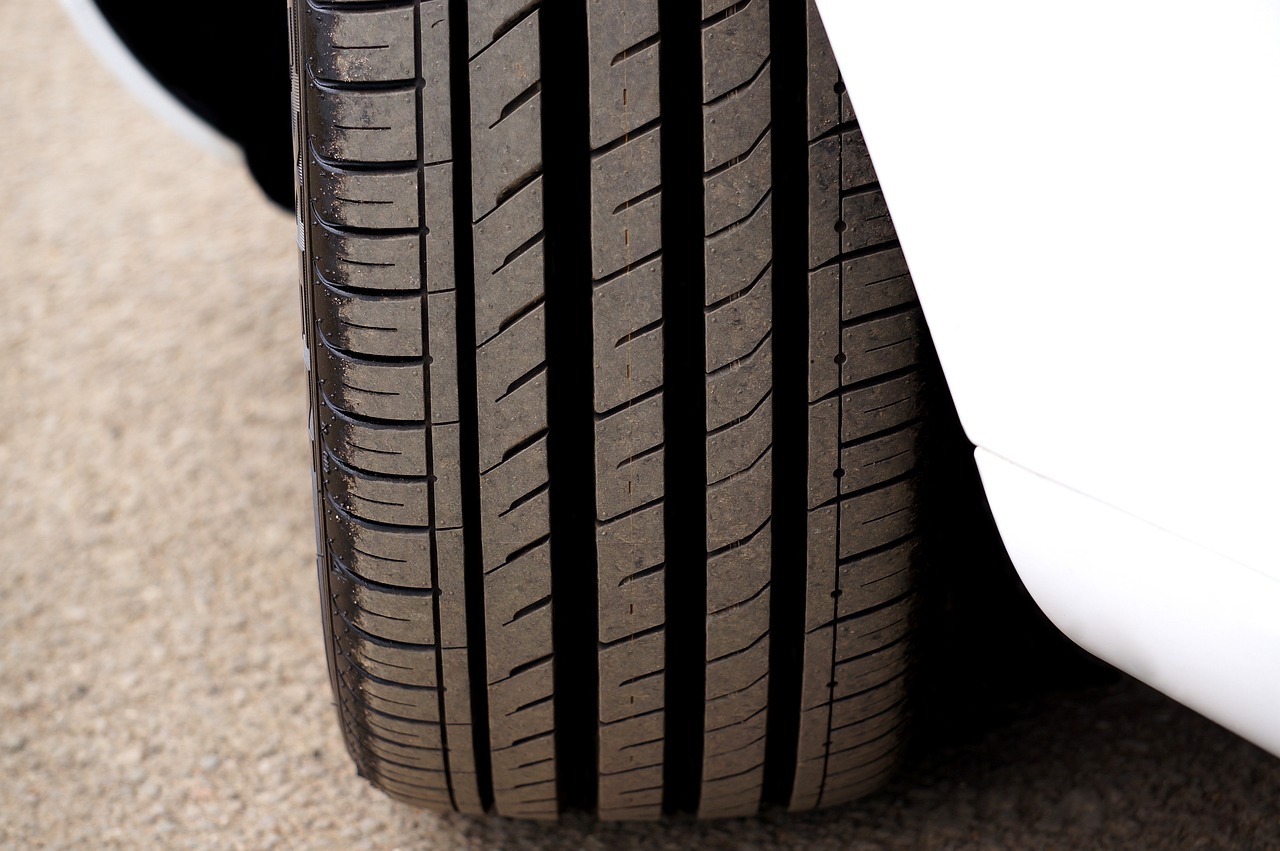
Benefits of Tyre Recycling
Recycling tyres is not just a trendy buzzword; it’s a critical practice that brings a multitude of benefits to our environment, economy, and communities. Imagine a world where waste is minimized, resources are conserved, and new products are created from what we once deemed useless. That’s the essence of tyre recycling! By transforming old tyres into valuable materials, we can significantly reduce the burden on our landfills and promote a more sustainable future.
One of the most significant environmental advantages of tyre recycling is the conservation of natural resources. When tyres are recycled, the materials can be repurposed for various applications, which means less need for virgin materials. This not only preserves our planet's resources but also reduces energy consumption associated with the production of new materials. For instance, recycled rubber can be used in playground surfaces, sports tracks, and even as a component in asphalt, which leads to a reduction in the demand for new rubber.
Moreover, tyre recycling helps in reducing landfill waste. Did you know that tyres take hundreds of years to decompose? That’s a long time for something that could be transformed into something useful! By recycling tyres, we can divert millions of them from landfills each year, significantly decreasing the amount of waste that ends up in these sites. This not only helps in managing waste but also reduces the risk of environmental hazards associated with tyre disposal, such as fires and the emission of toxic substances.
Another compelling reason to embrace tyre recycling is the economic benefits it brings. The recycling industry creates jobs and stimulates local economies. As demand for recycled materials increases, so does the need for workers in collection, processing, and manufacturing. This not only provides employment opportunities but also supports the growth of green businesses that prioritize sustainability. Furthermore, using recycled materials can lower production costs for companies, which can lead to lower prices for consumers.
On a community level, proper tyre disposal and recycling can have a profound impact on public health. Pollution from improperly disposed tyres can contaminate soil and water, leading to health risks for local populations. By promoting tyre recycling, we can reduce these risks and foster a healthier environment. Communities that engage in recycling initiatives often experience a boost in community pride and collective responsibility, as residents come together to support sustainable practices.
In summary, the benefits of tyre recycling are vast and far-reaching. From conserving natural resources and reducing landfill waste to providing economic advantages and enhancing community health, recycling tyres is a vital component of a sustainable future. It’s time to shift our perspective on waste and see the potential in what we have. The next time you think about tyres, remember that they can be so much more than just waste; they can be a resource for a better tomorrow.
- What happens to tyres when they are recycled? Tyres are processed through various methods such as shredding, granulation, and pyrolysis to create new products or materials.
- Can all types of tyres be recycled? While most tyres can be recycled, some types, like those with metal components, may require special processing.
- How does tyre recycling help the environment? It reduces landfill waste, conserves natural resources, and decreases pollution associated with improper disposal.
- Are there any economic benefits to tyre recycling? Yes, tyre recycling creates jobs, lowers production costs, and contributes to local economies.

Economic Advantages
The economic advantages of tyre recycling are as compelling as they are numerous. By engaging in proper tyre disposal and recycling, we not only address environmental concerns but also unlock a treasure trove of financial benefits. It's like finding a hidden goldmine right in our own backyards! One of the most significant advantages is the potential for job creation within the recycling industry. As the demand for recycled materials increases, so does the need for skilled workers to manage the processes involved in recycling and reusing tyres.
Moreover, recycling tyres contributes to lower costs for raw materials. By transforming waste into reusable products, businesses can significantly reduce their reliance on virgin materials. This is particularly beneficial in industries such as construction and manufacturing, where the costs of raw materials can be a substantial part of overall expenses. For instance, using recycled rubber in asphalt can lower production costs while still maintaining quality, making it a win-win situation.
Additionally, the recycling process can lead to the development of new markets and products. For instance, the production of crumb rubber from recycled tyres has opened doors to innovative applications, such as:
- Sports surfaces: Crumb rubber is extensively used in synthetic turf and athletic tracks, providing safer and more durable surfaces.
- Insulation materials: Recycled rubber can be used in construction as insulation, contributing to energy efficiency.
- Consumer goods: Various products, from footwear to automotive parts, can be made from recycled tyre materials.
In a broader context, the tyre recycling industry can stimulate local economies. By establishing recycling facilities, communities can benefit from increased economic activity, attracting investments, and fostering entrepreneurship. The presence of a recycling facility can also lead to the development of ancillary businesses, such as transportation and logistics services, further enhancing economic growth.
To summarize, the economic advantages of tyre recycling are multifaceted. They not only promote sustainable practices but also create job opportunities, reduce material costs, and stimulate local economies. Embracing tyre recycling isn't just an environmental imperative; it's a smart economic strategy that can lead to a more sustainable future for everyone.
- What are the economic benefits of tyre recycling? Tyre recycling generates jobs, lowers raw material costs, and stimulates local economies through new markets and products.
- How does tyre recycling impact local communities? Proper tyre recycling reduces pollution, enhances public health, and promotes community engagement in sustainability efforts.
- What products can be made from recycled tyres? Recycled tyres can be transformed into sports surfaces, insulation materials, and various consumer goods.

Community Impact
When we think about the impact of proper tyre disposal and recycling, it’s easy to overlook how it resonates within our communities. However, the effects are profound and far-reaching. By engaging in responsible tyre recycling, we contribute to a cleaner environment, which directly enhances public health and well-being. Imagine a neighborhood where the air is fresher, the ground is less polluted, and children can play in parks free from hazardous waste. This vision is not just a dream; it can be a reality through effective recycling practices.
One of the most significant ways that tyre recycling benefits communities is by reducing pollution. When tyres are improperly disposed of, they can leach harmful chemicals into the soil and waterways, posing risks to both human health and local ecosystems. By recycling tyres instead, we minimize these dangers and create a safer environment for everyone. Moreover, reducing pollution also means less strain on local healthcare systems, as fewer people will suffer from pollution-related illnesses.
Additionally, tyre recycling can stimulate local economies. The recycling process creates jobs, from collection and transportation to processing and manufacturing. As a result, communities can experience economic growth through the establishment of recycling facilities and the creation of new products from recycled materials. For instance, shredded tyres can be transformed into playground surfaces, providing safe recreational spaces for children. This not only boosts local employment but also enhances community infrastructure.
Furthermore, engaging in tyre recycling initiatives fosters a sense of community responsibility. When residents come together to participate in recycling programs, they develop a collective identity centered around environmental stewardship. This collaboration can lead to increased awareness about other sustainability issues, encouraging communities to adopt more eco-friendly practices in various aspects of daily life.
To illustrate the community impact of tyre recycling, consider the following table that highlights key benefits:
| Benefit | Description |
|---|---|
| Reduced Pollution | Minimizes harmful chemicals leaching into the environment, safeguarding public health. |
| Job Creation | Stimulates local economies through new job opportunities in recycling and manufacturing. |
| Community Engagement | Fosters a sense of responsibility and collaboration among residents towards sustainability. |
In conclusion, the positive impacts of tyre recycling on communities are undeniable. From creating healthier environments to boosting local economies, the benefits are extensive. As individuals, we can take part in this movement by supporting and participating in tyre recycling initiatives. Together, we can build a sustainable future that prioritizes both our health and our planet.
- Why is tyre recycling important? Tyre recycling is crucial for reducing landfill waste, preventing environmental pollution, and conserving natural resources.
- How can I recycle my old tyres? Many local auto shops and recycling centers accept used tyres for recycling. Check with your local waste management facility for options.
- What products can be made from recycled tyres? Recycled tyres can be transformed into various products, including playground surfaces, rubber mats, and asphalt for roads.
- Are there regulations for tyre disposal? Yes, regulations vary by location, but many areas have laws to ensure proper handling and recycling of tyres.
Frequently Asked Questions
- What are the environmental impacts of improper tyre disposal?
Improper tyre disposal can lead to severe environmental consequences, such as soil and water pollution. When tyres are dumped in landfills or abandoned, they can leach harmful chemicals into the ground and waterways, affecting local ecosystems and potentially harming wildlife and human health.
- What methods are commonly used for tyre recycling?
There are several effective methods for tyre recycling, including shredding, crumb rubber production, and pyrolysis. Each method has its unique benefits; for instance, shredding turns tyres into smaller pieces for use in various applications, while pyrolysis breaks them down thermally to recover valuable resources like oil and gas.
- How can shredded tyres be utilized?
Shredded tyres have a wide range of applications. They can be used in asphalt modification for roads, as fuel in cement kilns, and even for creating playground surfaces. This versatility showcases how recycled tyres can contribute to sustainable practices across different industries.
- What challenges are associated with tyre shredding?
While shredding is an effective recycling method, it does come with challenges, such as contamination from non-tyre materials and wear on equipment. Addressing these challenges is crucial to ensure the efficiency and effectiveness of the recycling process.
- What regulations exist for tyre disposal?
Various regulations govern tyre disposal to ensure safe handling and promote recycling initiatives. These laws can vary by country and locality, so it's essential for businesses and individuals to familiarize themselves with the specific regulations applicable in their area.
- What are the economic benefits of tyre recycling?
Tyre recycling can lead to significant economic advantages, including job creation within the recycling industry and lower costs for raw materials. These economic incentives not only support sustainable practices but also contribute to local economies.
- How does proper tyre disposal impact communities?
Proper tyre disposal and recycling can have a positive impact on communities by reducing pollution and improving public health. Engaging community members in recycling efforts fosters a sense of collective responsibility towards environmental stewardship and encourages sustainable practices.



















